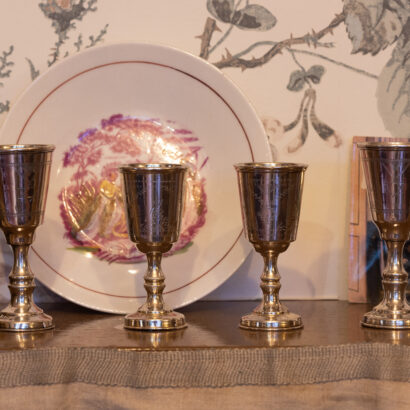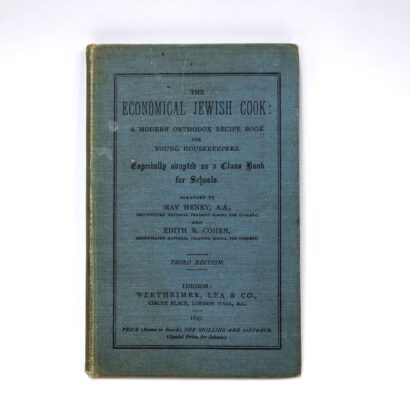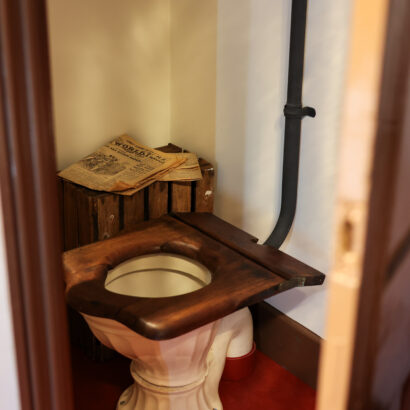The Rothschild Buildings were among dozens of tenement blocks built in the late 1800s in an effort to clear inner London of its most notorious slums and raise the standard of living for working-class Londoners. By the 1980s these blocks had in turn become symbols of east London’s poverty, and the Rothschild Buildings were among many that were demolished.
On Friday nights the Delinsky family welcomes in Shabbos (the Sabbath) marking the Jewish day of rest, which begins at sundown in a few hours’ time.
Ray’s famous lokshen soup is simmering on the stove as she prepares the chicken to be roasted in the oven.
Ray’s daughter Bessie has spent most of the day tirelessly cleaning the flat and has just sent her brother Nathan to Brick Lane to fetch some last-minute supplies.
Their father Israel has finished a long week of work and has gone to the local synagogue to pray, before returning home to begin dinner with a blessing.
This room was curated with the help of participants from Jewish community groups, and funded by the Shoresh Trust.
Objects to look out for

Religious Silverware, about 1900-1910
Silverware would have been an enormous expense for a family like the Delinskys, but it was important to be able to mark religious occasions with high quality items. The silver kiddish cups and salt and pepper set would have been used every Friday, with the drinking of wine and the eating of challah bread and salt signalling the start of Shabbos dinner.
Kiddish cups, Credit: Jaron James

The Economical Jewish Cook by May Henry and Edith B. Cohen, 1897
Most families in the Rothschild Buildings relied on credit from shopkeepers to be able to buy enough food for their families. Children would be sent to Brick Lane with their own containers, and only buy the exact weight they could afford. Books like this one, aimed at young girls, tailored the recipes to the limited means of most East Enders.
The Economical Jewish Textbook, third edition, 1897, Credit: Museum of the Home.

Toilet
The flats in the Rothschild Buildings were each fitted with an internal toilet, a rarity in East End homes well into the 1900s. In the notorious Booth Street buildings in Stepney, six hundred tenants had to share just thirty toilets. For those who couldn’t afford toilet paper, yesterday’s newspaper provided a free alternative.
Toilet, Credit: Jaron James

Free digital guide
Explore Museum of the Home with our digital guide on Bloomberg Connects, the free arts and culture app.